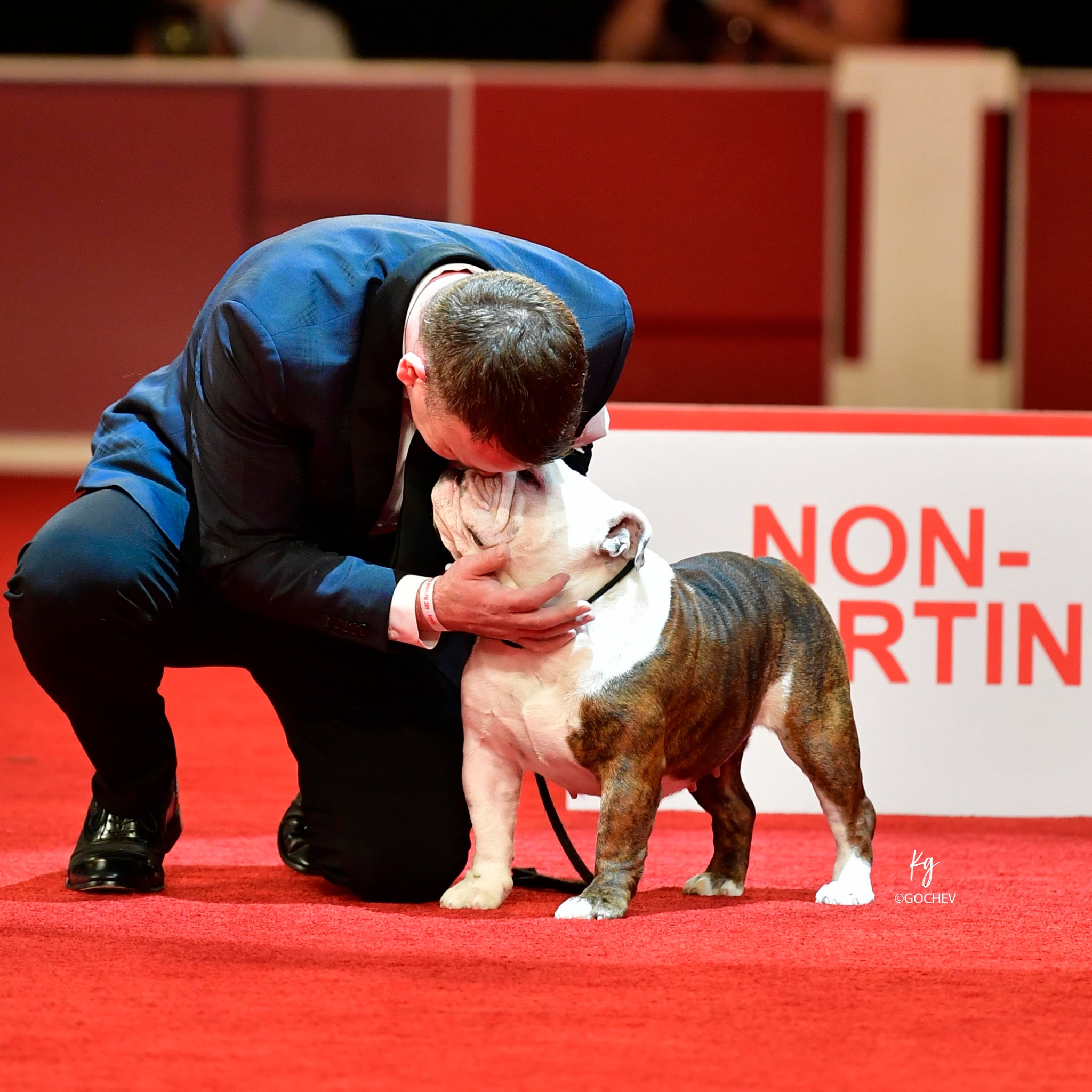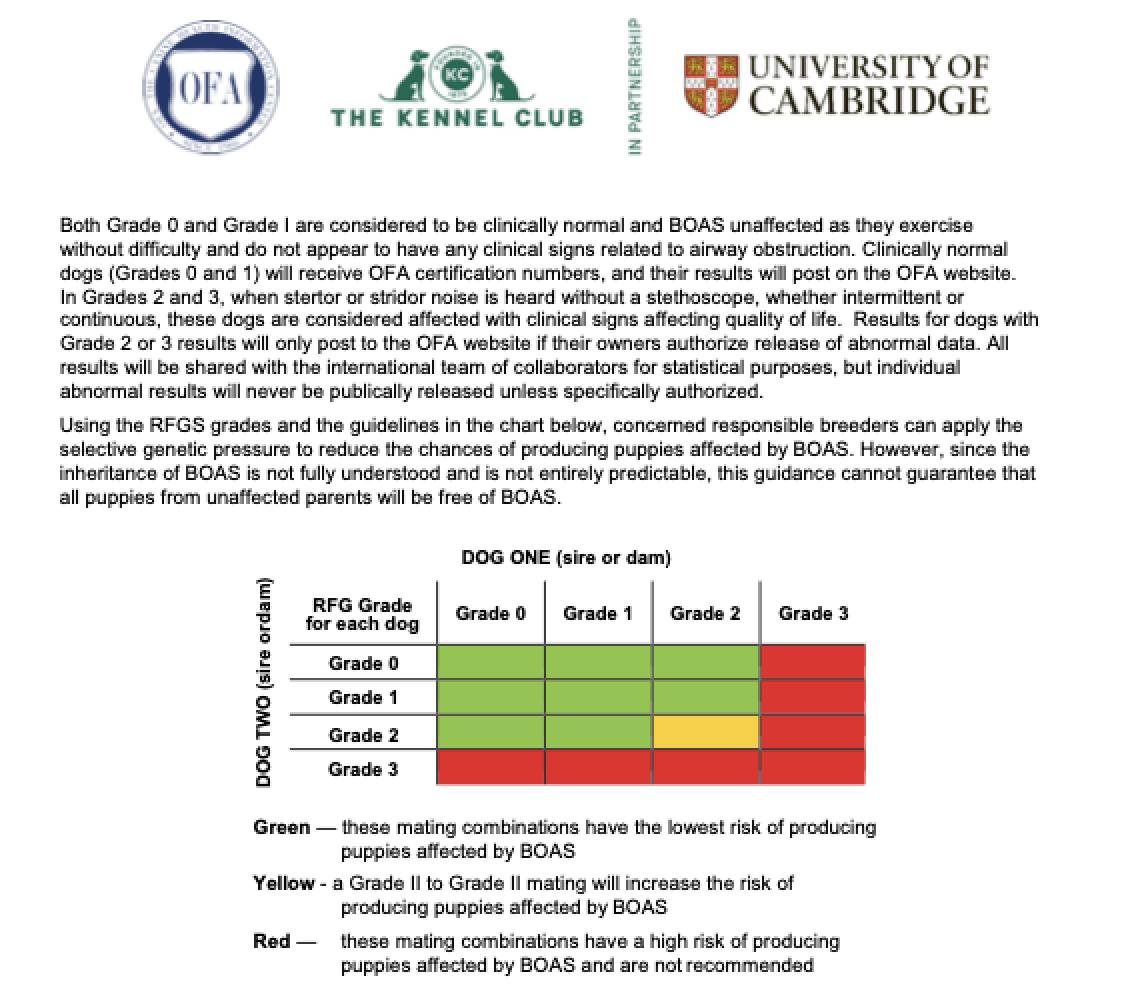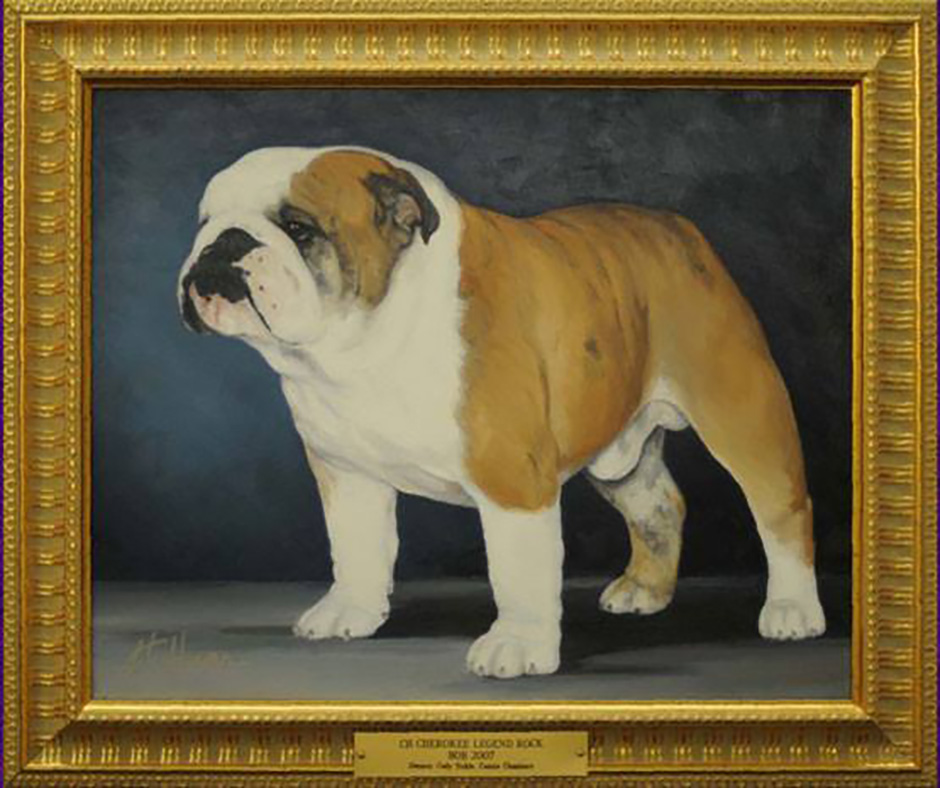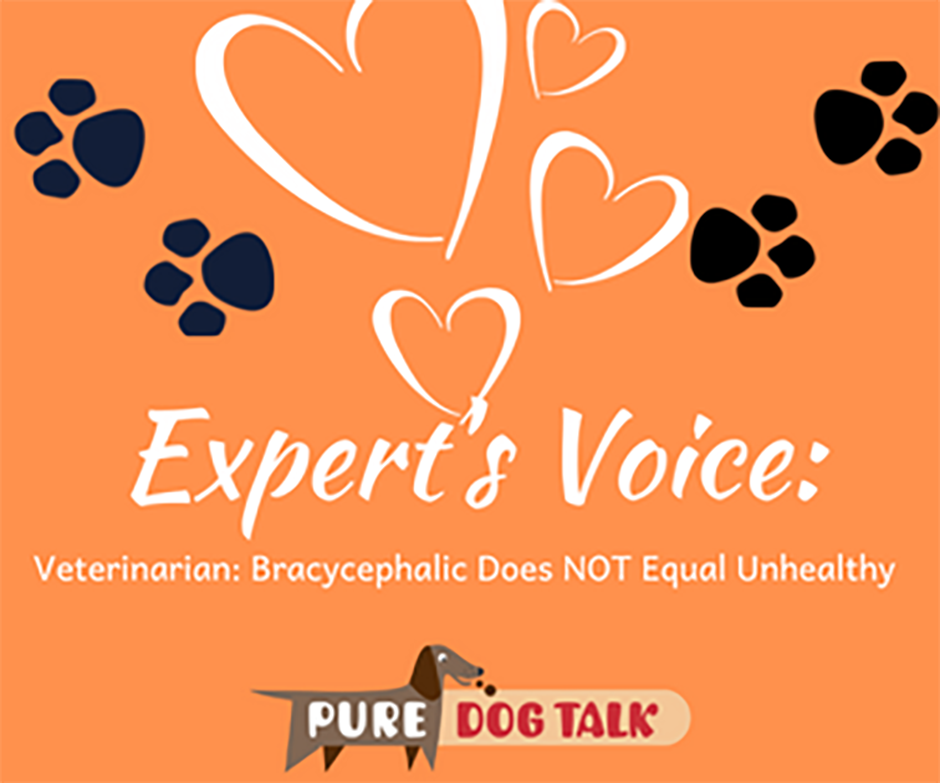650 — Breeding a “Star” requires depth of knowledge
Breeding a “Star” requires depth of knowledge
Join host Laura Reeves for part two of her conversation with Cody Sickle, Cherokee Legend Bulldogs, breeder of Star, GCH Cherokee Legend Encore, BIS at the 2022 AKC National Championship.

GCH Cherokee Legend Encore, “STAR”. Breeders-Cody T Sickle, Connie Chambers and Sherry Hazelett
Owners- Alaina Moulton, BJ Whitlow, and Kevin & Natalie MasonLe
“I think there’s a lot of things to think about in breeding,” Sickle said. “I think one of the things to really focus on in breeding is watch what everybody else is doing. Just like in picking puppies, knowledge makes a difference. Knowledge makes a difference in this too. Look who’s breeding successfully.
“I think most breeders would actually be better if they never owned a stud. Because I don’t think most breeders have the fortitude, the self-control, not to think they’re going to make their own stud famous. I think the best breeders think in terms of ‘I don’t care who owns this dog, if I think there’s a stud out there that will improve my breeding program, even if I don’t care for the people that own the dog at all, doesn’t matter. I’m not marrying them, I’m breeding to their dog’.
“And when you do a breeding, be honest about it. When I do a breeding, I don’t have the idea that, well, I’m going to keep the best this or that out of the breeding. I don’t think of that. I’ll keep the best out of it if it’s good enough. But just because it’s out of two dogs that I have a high regard for if the puppies aren’t good enough, move on.
“We will frequently do grandfather to granddaughter breedings. I’ve only once done a brother and sister breeding. And it turned out to be wonderful, but they were the only brother and sister I’ve ever seen in our breed that I would have considered breeding together.
“We’ve been fortunate to have good studs. And a good measure of that is the last 40 years for the national specialty at least one Cherokee stud is behind every single breed winner. And that impresses me. And a lot of the record stuff doesn’t impress me.
“I think the future of Bulldogs in general is good. Bulldogs are a wonderful family dog. Not every family, you know, if you’re a family of athletes who’s going to go out running the marathon every weekend, Bulldog’s not the right dog. If you want a dog that is going to be a terrific family pet, love everybody, get along with everybody. A bulldog is an excellent dog. They’re just nice dogs.
“I think we are so fortunate to have the sport of dog shows. For a lot of us, it’s a major part of our lives and has been for the major part of our lives. But I like the dogs, I like the competition, I like the people, I like the camaraderie. There’s no place that I feel more comfortable than a dog show, and that’s because of the people for sure, and as much complaining as we see on social media, I think it’s a wonderful sport.”
569 – OFA Launches New Testing for Brachycephalic Breeds
OFA Launches New Testing for Brachycephalic Breeds

Dr. Kathleen Smiler, DVM, Pug Dog Club of America Health Committee Representative.
Eddie Dziuk, Chief Operating Officer at the Orthopedic Foundation for Animals, and Dr. Kathleen Smiler, DVM, Health Committee Representative from the Pug Dog Club of America, join host Laura Reeves to introduce the new BOAS testing program.
“Brachycephalic Obstructive Airway Syndrome (BOAS) is a condition which may cause breathing difficulties in breeds such as Bulldogs, French Bulldogs and Pugs,” according to the OFA. “BOAS is caused when the soft tissue in the nose and throat are excessive for the airway, partially obstructing the airway and making it difficult for them breathe normally.
“BOAS is a progressive disorder and can impair a dog’s ability to exercise, play, eat and even sleep. Clinical signs of BOAS are variable and may include noisy breathing, exercise and heat intolerance, regurgitation and dysphagia. Unfortunately, many owners are unaware of the disease, and often interpret breathing noises or difficulties as simply normal for the breed.
“In an effort to learn more about the condition, increase awareness, and ultimately reduce the incidence of BOAS, researchers at the University of Cambridge in the UK developed the Respiratory Function Grading Scheme (RFGS). The goal of the RFGS was to develop an objective test to measure the clinical diagnosis and severity of BOAS. The OFA has joined this international effort and has licensed the RFGS for use in the US and Canada.
“The exam is conducted by a specially trained and approved veterinarian and consists of 4 steps:
- A short health survey regarding the dog’s breathing history
- A brief physical exam while the dog is calm including auscultation where the assessor listens to the dog’s breathing with a stethoscope gently positioned on the side of the neck. This establishes a baseline for any clinical signs of BOAS.
- A short exercise test consisting of a brisk three minute walk. This is designed to expose clinical signs of the disease in an otherwise calm and asymptomatic dog. It is not designed to assess cardiovascular fitness.
- A post exercise auscultation after increased airway activity to compare to the pre-exercise baseline.”
“I think the veterinarians were extremely enthusiastic,” Smiler said of the veterinarians participating at a recent event in Portland, Oregon. “And I think the participants were quite pleased too, I think. I went and sat in the meet the breeds box with the pug people in Portland and everybody was quite satisfied. I think our club in general was very satisfied.”
“We examined 54 dogs (at the rollout in Portland),” Dziuk said. “We actually did 60 where we had a couple breeds that weren’t on the official breed participant list yet. So, we had 54 between Bulldogs, Frenchies and Pugs and we also had a couple of Bostons and Pekes.
“Overwhelmingly (we had) pretty good results. We had 10 Grade 0. So, the grade zeros are basically everything was good. These dogs were good breathers, they had nice wide open nostrils. There were no sounds of turbulence or anything during the auscultation, so everything was looking pretty good. We had 18 grade 1, which is also good. It means that in general, nothing could be heard without a stethoscope and you could only hear some of the minor issues with the stethoscope, but the dogs are basically still found to be clinically unaffected by BOAS. We did have 25 grade twos and we had one lone grade three.
 “I think that goes to prove the point that not all Bulldogs suffer breathing difficulties, not all Frenchies suffer breathing difficulties, and not all pugs do either. That there is a large group in all three of those breeds where they’re good healthy dogs that breathe fine, that don’t show signs of exercise intolerance, and we can work with those dogs and breed them and hopefully breed lots of future generations of good, healthy Frenchies, Pugs and Bulldogs.”
“I think that goes to prove the point that not all Bulldogs suffer breathing difficulties, not all Frenchies suffer breathing difficulties, and not all pugs do either. That there is a large group in all three of those breeds where they’re good healthy dogs that breathe fine, that don’t show signs of exercise intolerance, and we can work with those dogs and breed them and hopefully breed lots of future generations of good, healthy Frenchies, Pugs and Bulldogs.”
“We’re certainly very sensitive to the criticism that’s been directed toward brachycephalic breeds,” Smiler said. “I think we’re fortunate here in the US, where (breeding) isn’t a regulated activity, nor has the Veterinary Association attacked the breeds as they did in Europe. We’re going to make this information available to our members and highly encourage them (to participate). Then eventually I’d love to educate the puppy buyers. I think it’ll be very positive across the board.”
Listen in to the full episode for more details.
517 — Veterinarian: Brachycephalic Does NOT Equal Unhealthy
Veterinary Insight on Why Brachycephalic Does NOT Equal Unhealthy
Dr. Maryanne Mack, DVM, breeder of top winning Boston Terriers, joins host Laura Reeves to discuss recent developments in Europe in regards to legislating the breeding of specific breeds.
“I went to vet school because I love purebred dogs,” Mack said. “I love their role as companions and I wanted to go to vet school really to focus on that role of the dog in our life… Just really wanting to work with people and their pets and breeders as well to just make healthier companions for all of us.

Photo of host Laura Reeves’ champion pug who likes to catch mice in her spare time.
“I think that the fact that a lot of groups have started to associate having a short face with being unhealthy is a really slippery slope that we don’t wanna go down. There’s a couple components of brachycephalic airway syndrome. Those are stenotic nares, or really tight nostrils, an elongated soft palate and a hypoplastic trachea. Those are sort of the three main issues that you see with brachycephalic airway syndrome.
“We don’t have any studies showing those are directly related to the length of the nose.
“The component that we really have to look for, that we know make the biggest difference in these dogs, is the elongated soft palate…
“That’s not related to how long the nose is, that’s related to different genes that are writing for the length of the soft palate. We see long soft palates in dogs with long noses. We see this in Labradors, we see this in mixed breed dogs. So, it’s not only a brachycephalic issue.
“I think it’s really important to note that these things can occur in any breed of dog. They do happen to occur more in brachycephalic dogs, but we don’t have concrete evidence that it’s directly related to the length of the nose.
“Most brachycephalic breeds, with the exception of some of the more mastiff types, these dogs were bred to be companions. That’s their job and they do that very, very, very well. Part of the reason we love them so much is that these brachycephalic facial features elicit almost an infantile like response to people. I think that focusing on the fact that these are companion dogs.
“These dogs are not out flushing birds, they’re not working dogs, they are meant to make people happy, sit on your lap. I absolutely believe that they should be able to do things like go on a little hike …. they should absolutely be able to do that and be able to breathe while they do that. But this is not a dog that’s out herding sheep in the summer. I think keeping that in perspective is really important.
“I think we need to focus, as preservation breeders, on doing a little bit of a better job on selecting breeding stock and producing healthier versions of every breed. But for brachycephalic, specifically, we all know that there are some dogs out there that are not good breathers and that happens.
“I think the hard part as a breeder is to say ‘OK this dog might be beautiful, this dog might have a great top line and this has great movement but he cannot breathe and I should probably put him in a companion home where he won’t be bred.’ That’s a really, really hard decision to make, but I think as we move forward, especially in this new culture and climate, we have to make more of those decisions.
Preservation Breeders are the Solution
“We as preservation breeders are actually the solution. We are the solution to this problem. If we work together to breed healthier dogs and if we work together to breed more of these dogs… I can’t tell you how many of my clients come in with a puppy mill puppy and they say ‘Well Dr. Mack, you told us some great breeders but we didn’t wanna wait for three years, so we ordered this one online and picked it up at the airport and here he is.’
“It breaks my heart because we as preservation breeders, if we had more available dogs that were well bred, people would buy them and they would love them. Vilifying people that breed more than one to two liters a year or whatever number you’ve decided is too many I think is detrimental to all of us.
“I first posted a statement in the beginning of 2020 basically saying I’m a veterinarian, I breed these dogs and it can be done right. These dogs are not inherently unhealthy. I received enormous backlash basically saying this veterinarian shouldn’t be a veterinarian, how can any veterinarian promote the breeding of brachycephalic dogs. It went so far as to contact my place of work, contacting me personally. I had to take my website down. I had to make everything private. I had to tell people who had wanted me to be an advocate for this I can’t do it right now because they’re coming for me.
“In the veterinary community I get backlash like ‘how can you breed these dogs.’ Oftentimes these people, once they meet my dogs and realize they can breathe and they’re healthy and they look great, they realize that we see a disproportionate number of unhealthy dogs just by the nature being veterinarians.
“I’ve actually done a little self-study where a dog comes to see me and I always find out where the dog came from. Then I make a note what issues does this dog have. About 95% of brachycephalic dogs I see that are bad breathers are from a pet store, a puppy mill or rescue. That is just the fact that I’ve gotten over six years of being a veterinarian, that these dogs are often the ones that they ordered online.”
Listen to this fabulous interview with Bulldog specialist Jay Serion to learn more about the Bulldog Club of America’s work on breeding healthy dogs. And this outstanding Love the Breeds episode with more information about Pugs from three nationally renowned breeders.



